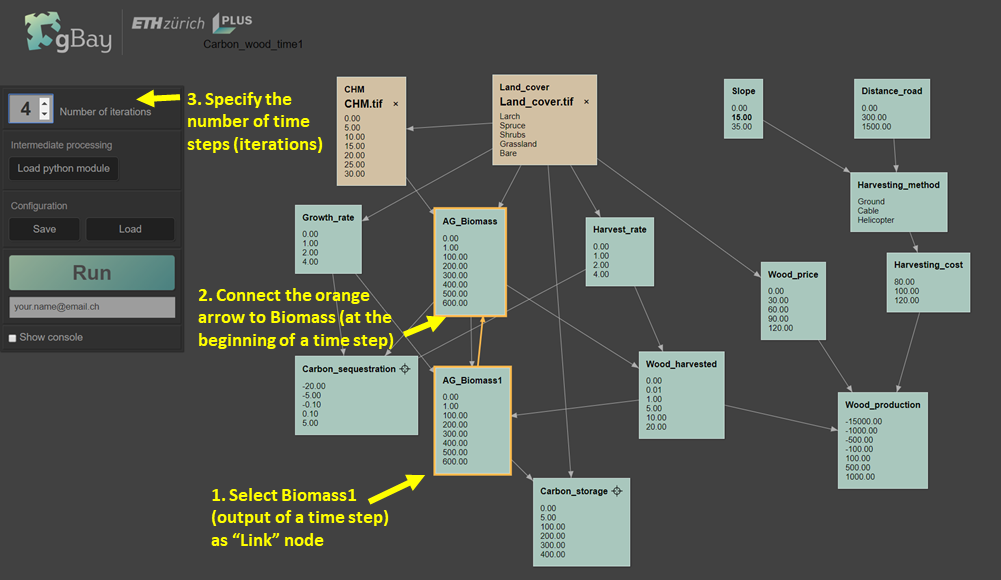Iterative BNs
Bayesian Networks usually represent a static state of the studied system, and feedback loops cannot be incorporated. To take into account changes over time, including feedbacks, we can use dynamic BNs, using the so-called “time-slicing” approach. gBay uses a simplified version of this approach, where each time step is represented by a run of the network, where the outputs of one step are used as inputs to the next time step.
For example, when modelling carbon storage over time, we start with an estimate of the forest biomass at the beginning of the first time step (Biomass). During one time step, growth and harvesting take place, and through inference we obtain the probability distribution of land use after the first time step (Biomass1, e.g. after 10 years). This Biomass1 then becomes the input for Biomass in the second time step.
In gBay, we create such an iterative BN by specifying links across time steps. To do this, click the option “Link” on the output node that should feed into the input of the next time step (Biomass1). An orange arrow will appear, which should be connected to the corresponding input node (Biomass).
